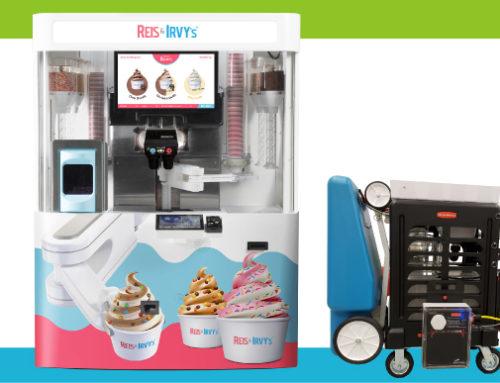Popularity of Ice Cream
According to a Yahoo report ice cream is America’s favorite dessert chosen by 41% of Americans.
In any given two week period, according to the NPD marketing research group, 40% of Americans will eat ice cream. NPD found that children between the ages of 6-12 years consume the most ice cream (62%), followed by adults over 75 years of age (58%). Millennials are the most likely to eat ice cream daily.
A Yahoo report from August 2015 claimed that Americans, on average, eat $8 billion worth of ice cream annually. The business of ice cream globally totals $77.3 billion.
I Scream, You Scream…
Ice cream does compete with its trendier, slimmer cousin frozen yogurt. In 2014 IBIS World reported an estimated 2,582 frozen yogurt stores. That’s twice the number that existed in 2008. However, some of the frozen yogurt chains are now offering soft serve ice cream as an option.
A 2015 report from Dataessential, another market research group, found that soft serve sales had grown 18% from 2011-2015.
Yahoo found that location wise, of those Americans that prefer soft serve over scoop ice cream, 45% reside in the Northeast.
Let Your Taste Buds Decide
Soft serve ice cream does have some science behind its popularity over frozen ice cream. The temperature of soft serve is about 20 degrees Fahrenheit compared to 5-10 degrees for frozen ice cream. Soft serve is filled with more air and has a lower milk fat content. These differences allow taste buds to pick up the flavors faster leading to quicker gratification.
As with most desserts, fat and sugar are obvious constituents of ice cream. The general public is consciously aware of consuming ice cream in moderation because of these two ingredients. But are there any health benefits to consuming ice cream?
According to Dr. Joanne Marie, “although the nutritional content of ice cream varies among brands and types, in general it’s an excellent source of energy. It’s rich in carbohydrates with an average of about 15 grams in a 1/2 cup serving. A serving also contains on average 2 grams of protein, making it an energy dense food.
According to the US Department of Agriculture, 1/2 cup of vanilla ice cream provides 137 kilocalories of energy, twice the amount in a 1/2 cup of whole milk.
Ice cream is also a dietary source of several important minerals. It’s particularly rich in calcium and phosphorous with about 10% of the adult recommended dietary allowance of these minerals in a single 1/2 cup serving.

Ice cream can contain vitamins A, C, D, and E as well as thiamin, riboflavin, niacin, folate and vitamins B-6 and B-12.
Ice cream can be a problem however for those 30 million Americans with lactose intolerance. But taking a lactase supplement, the enzyme needed to digest lactose, may alleviate the problem.”
So all in all more Americans favor ice cream over any other dessert. It does have some health benefits. But because of the fat and sugar content moderation must be observed with young children, especially since they are the highest consumers of their favorite dessert.
Which is your favorite…soft serve, scooped or frozen yogurt? Leave a comment below!

Dr. Gary Russotti MD, MS
Idea Boxx – Director of Medical/Biochemical R&D and Regulatory Compliance
- Ice Cream Picture; Timeout.com, The Best Ice Cream in London


